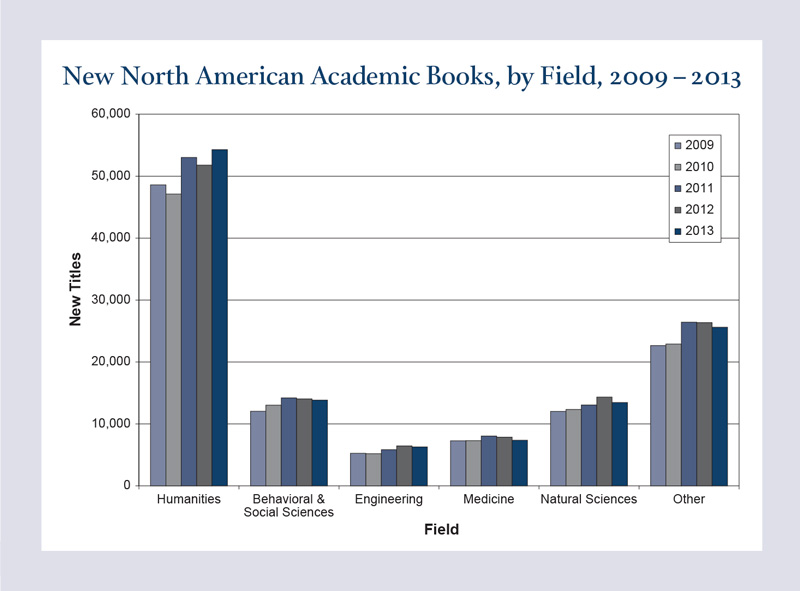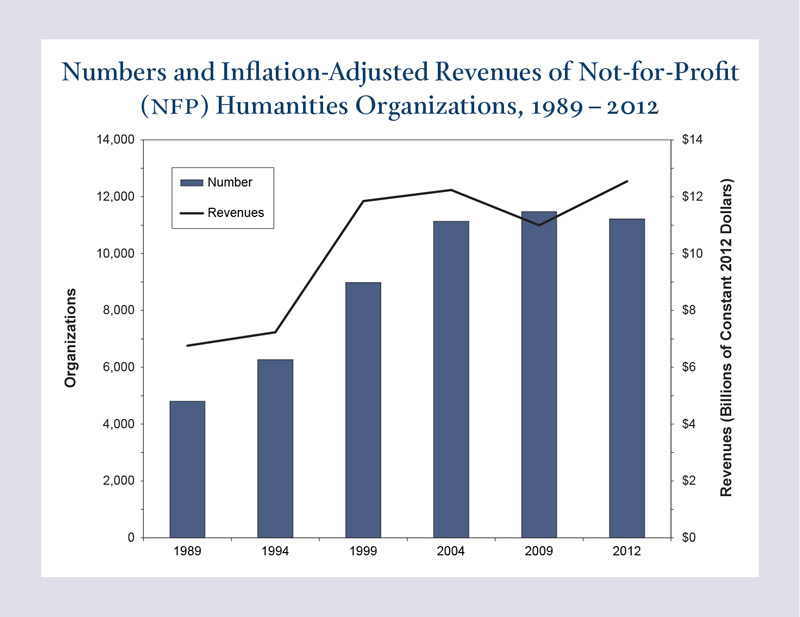Over the past year, the Humanities Indicators of the American Academy (http://humanitiesindicators.org) have been offering evidence for many of the urgent questions facing the humanities field. The Indicators encompass humanistic activities from early in life (parents reading to children, education in the schools) through college and on to encounters with the humanities later in life.
Humanities in the Education System
As a field, the humanities rely heavily on a strong foundation in reading and basic language skills developed at an early age, but recent releases of the Indicators show a number of disturbing patterns in youths reading for fun and scoring on national and international tests. For instance:
- The share of 17-year-olds who reported never or rarely reading books had grown larger than the share who read almost every day.
- A declining share of K–12 humanities teachers are fully qualified (by education and certification) to teach English, history, and foreign language subjects. As of 2012, a substantial portion of public high school students in humanities subjects were being taught by someone who lacked either certification or a degree in the subject they were teaching.
- The share of juniors and seniors expressing an interest in majoring in the humanities has been falling in recent years. In a discussion on the Academy’s Data Forum (available at http://www.amacad.org/DataForum), Chandra L. Muller and Jamie M. Carroll (Department of Sociology and Population Research Center, University of Texas at Austin) found that while students have been indicating declining interest in the humanities before they begin their studies, when the same question is asked of first-year students in college, there appeared to be an increase in the share.
 |
| Source and details at http://humanitiesindicators.org. |
Earnings and Occupations of Humanities Majors
There has been considerable speculation in the media over the past two years that college students are retreating from the humanities due to post-collegiate earnings. To address this claim, the Indicators published original research on Census Bureau data showing that while humanities majors often lag behind graduates from other fields in earnings, with additional experience and study, humanities majors generally gain on graduates from other fields. Among the other key findings:
- In 2013, the median annual earnings for undergraduate humanities majors were $50,000 for those who held only a bachelor’s degree and $71,000 for those who had earned an advanced degree (in any field). Both amounts are $7,000 below the median for graduates from all fields with similar degrees.
- The salary differential between humanities majors and graduates from other fields generally narrowed with experience. When the median salaries of younger workers (ages 24 to 34) are compared to those with more experience (ages 35 to 54), the gap in median salaries between the humanities and graduates from all fields narrowed by about two percentage points for those who hold only a bachelor’s degree (declining from 11.1 percent to 9.1 percent) and those who had earned advanced degrees (falling from 12.3 percent to 10.5 percent).
- A comparatively large share of humanities graduates go into education-related occupations–especially
among those with terminal bachelor’s degrees, where the humanities are second only to education majors. But among the 42 percent of undergraduate humanities majors who had gone on to earn an advanced degree, workers were more evenly distributed across occupational categories than majors in most of the other fields.
Christine Hensler (Professor and Chair of Modern Languages and Literatures, Union College) offered an assessment of the new numbers in the Academy’s Data Forum, surveying the values that are left out of an analysis of the economic outcomes of college graduates. She argued that “We have a social responsibility to reshape what really counts among all the counting.”
 |
| Source and details at http://humanitiesindicators.org. |
Original Research on the Health of the Field
Alongside the general questions about the health of the humanities in American life, the Indicators have also published original analyses on such topics as interdisciplinary scholarship and the relationship between funding and the time it takes to earn a PhD. Among the key findings:
- Median time to a PhD in the humanities was at least a year longer than the life and physical sciences. And in every field, PhDs who relied primarily on personal or employer funding had the longest time to degree.
- A growing share of recent PhDs say their work is interdisciplinary, but over 70 percent of the graduates that described their dissertations this way worked in two or more disciplines within the same broad field of study (e.g., a humanities PhD will draw on history and philosophy, or a life sciences PhD will report molecular biology and medicine as his or her primary and secondary fields).
- Total revenues of the humanities not-for-profit sector have largely recovered from the recession, but the number of organizations declined, indicating that not all of them survived the economic downturn. As of 2012, humanities not-for-profits had combined revenues of over $12.5 billion (accounting for 0.08 percent of the revenues reported for all IRS-designated 501(c)(3) public charities).
- 54,273 new academic humanities titles appeared in 2013, accounting for almost half of all academic books published. While the number of humanities titles had increased over the previous year, the number of titles published in most of the other academic fields declined slightly.
In the coming year, the Indicators will be producing additional research on education in languages other than English, trends in the number of degrees earned in humanities disciplines and public engagement with humanities institutions, as well as the employment patterns of those with graduate degrees in the humanities.
For more information about the Humanities Indicators, please visit the Academy’s website.